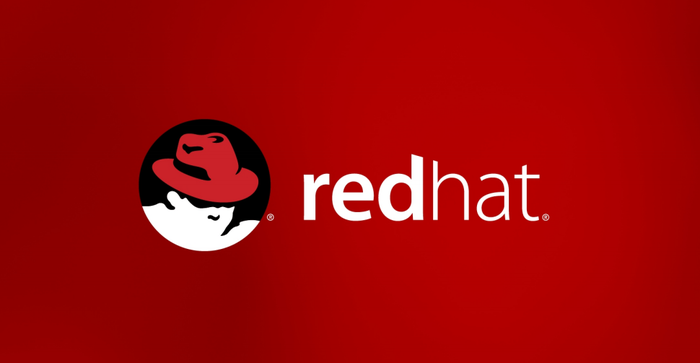Mobile market disruptor lays core-to-edge network foundation with Red Hat’s open hybrid cloud technologies, including Red Hat OpenStack Platform and Red Hat Enterprise Linux
Red Hat, Inc. (NYSE: RHT), the world’s leading provider of open source solutions, today announced that its open source technologies will be used by Rakuten, Inc., in launching its new innovative mobile network, which is planned to be launched in October 2019. The fully virtualized, end-to-end cloud-native network will allow Rakuten Mobile Network to more agilely respond to customer needs and provide differentiated offerings from legacy mobile vendors, as well as better prepare the carrier to meet the forthcoming demands of 5G technologies.

5G represents a major change for both mobile providers and end users, enabling innovative services to be more effectively and efficiently delivered to consumers with data speeds that can be 100 times faster than 4G networks and with almost zero latency. At the same time, 5G requires new, expansive network infrastructure to handle these services, which also require carriers to manage data traffic well in excess of 4G offerings. Seeing the opportunity presented by 5G, Rakuten Mobile Network sought to build its mobile infrastructure with next-generation services in mind and tapped Red Hat to help the company do so.
Entering a Japanese mobile market comprised primarily of three main players, Rakuten Mobile Network wanted to not only prepare for a 5G reality but also use software innovation to speed up the delivery of mobile services to end users. To do this, they wanted to build a flexible, scalable and cloud-native telecommunication network infrastructure that could meet end-user needs while keeping operational costs low.

By engaging with Red Hat, Rakuten Mobile Network has built a network functions virtualization (NFV) cloud, where network functions run in virtualized environments on general purpose servers rather than on specialized hardware and proprietary software. The Red Hat technologies underpinning this telecommunications cloud include:
- Red Hat Enterprise Linux for a stable, consistent and more secure operating system footprint
- Red Hat OpenStack Platform for highly-scalable Infrastructure-as-a-Service (IaaS) capabilities
- Red Hat Ceph Storage for massive software-defined storage functionality
Via this cloud-based approach to mobile services, Rakuten Mobile Network will be able to offer a range of consumer and commercial services, including:
- Consumer mobile broadband
- 5G radio access (subject to government licensing approval)
- Narrow Band-IoT
- Rich media like streaming video
- Augmented and virtual reality

Rakuten Mobile Network’s NFV cloud spans from the central core datacenters to edge computing deployments, with integration performed by Cisco Systems. By using advancements in edge computing, the provider is able to more quickly deploy new services closer to end users, helping to reduce latency and enabling an optimal user experience. Additionally, Rakuten Mobile Networks intends to take advantage of virtualized radio access network (vRAN) technology, provided by Altiostar Networks, on Red Hat OpenStack Platform, enabling it to develop mobile services in a software virtualization environment. The vRAN technology will be used to power both of the RAN services on general purpose servers that interface to zero footprint radio cellsites. This helps Rakuten Mobile Network to prepare for the 5G future of mobile networks while still rolling out 4G services.
Supporting Quotes
Chris Wright, vice president and CTO, Red Hat
“The next generation of mobile networks isn’t defined by inflexible, proprietary solutions; it’s founded in cloud-native technologies driven by open source. From 5G to augmented reality, advancements in mobile services are being powered by open software on open standards-based hardware. As a leader in building open, innovative telecommunications infrastructure, we are pleased to have helped Rakuten Mobile Network to not only develop its next-generation network but to also set the bar for how open, cloud-native designs can define mobile networking.”
Tareq Amin, CTO, Rakuten Mobile Network Inc.
“Our vision is to build a network that innovates at the speed of software and scales at the speed of cloud, and with a culture founded in technical and operational innovation, we are uniquely positioned to achieve that. We are excited to work with leading partners from around the world such as Red Hat as we work to create the world’s first end-to-end fully virtualized cloud-native network. End-to-end automation for both network and services is a pillar or our systems building strategy, and by using Red Hat’s open source technology we can achieve automation and auto-scaling, enabling more productive operations and allowing us to provide cost-effective services to our customers.”
Thierry Maupile, executive vice president, Altiostar Networks, Inc.
“5G represents a significant step forward for mobile networks, from greater data transfer rates to more advanced services, but its benefits have previously been locked behind expensive hardware upgrades. In collaboration with Red Hat, we’re pleased to have helped enable 5G capabilities for Rakuten Mobile Network via our vRAN solution, delivering a mobile network ready for innovation while still delivering the necessary 4G services end users expect today.”
About Red Hat, Inc.
Red Hat is the world’s leading provider of enterprise open source software solutions, using a community-powered approach to deliver reliable and high-performing Linux, hybrid cloud, container, and Kubernetes technologies. Red Hat helps customers integrate new and existing IT applications, develop cloud-native applications, standardize on our industry-leading operating system, and automate, secure, and manage complex environments. Award-winning support, training, and consulting services make Red Hat a trusted adviser to the Fortune 500. As a strategic partner to cloud providers, system integrators, application vendors, customers, and open source communities, Red Hat can help organizations prepare for the digital future.





